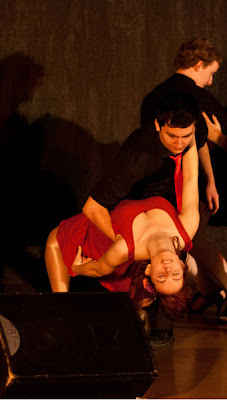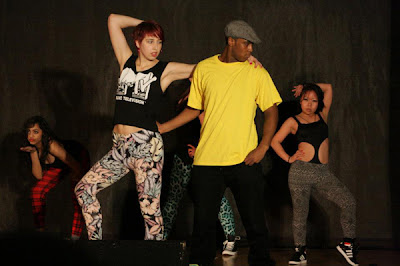
Taking photos of dancers is incredibly challenging and takes some practice before you get that completely sharp image with no blurred lines of movement. However, there are some tips I can give you if you’re thinking of taking photos of a dance performance some time soon!
Before reading on, if you are a dancer that wants to get great shots of yourself I’d recommend getting someone to take them for you who knows how to operate a digital SLR camera and they can follow this guide. Alternatively you could get yourself a high-resolution digital camcorder and take still shots using video editing software like iMovie or Windows Movie Maker.
Use a DSLR Camera
A DSLR is a digital SLR camera, such as the Canon 1100D, which is a modern version of the old Single Reflex Cameras and allows you to change the lens size for different focal lengths. The standard lens that comes complete with a package DSLR is the 18-55mm lens, which should be enough if you are taking photos of a dancer/ dancers where you can stand within roughly 10 feet of the subject(s) your are capturing whilst they perform.
You can pick one of these up for about £350 from somewhere like Jessops but if you really can’t get hold of one then you should try to find a camera that allows you manually edit its shutter speed, aperture, and ISO. I would strongly recommend using an SLR for this type of photography though (either by Canon, Nikon, or Sony).
To Flash or Not to Flash
If you are taking photos at a live performance with paying guests watching then I would advise against using a flash gun because it can be distracting to the performers and the paying visitors. Also, you may not be permitted to by the venue.
Instead, make sure that your camera’s ISO is up to at least 800 – 1600 (depending on how bright the house lights are) and that your aperture is as wide as it can be (low f-stop number i.e. f/2.8). The combination of the two will give you a huge amount of light in your image but if you find that it is too bright try knocking the ISO down first before increasing the f-stop number to get the exact amount of light you are looking to capture.
Tip: some lenses have lower f-stop numbers, meaning that it is able to achieve much more light. You will find that this is the case for lenses with shorter focal length e.g. 18mm and under. It does mean that you will have to stand closer to your subject, which can be impractical for a dance performance.
Need for Speed
When photographing a dance performance you need a high shutter speed to get crisp lines around your subject. Around 1/250 is a good start but begin to bump it down a little and see if you can get away with a slower speed because this will allow more time for light to touch the camera’s sensor. There is a balance between shutter speed, aperture and ISO that give you the correct amount of light in your shot.
Slower shutter speed will give you an image that is blurry because of the amount of movement involved in a performance. Unless you are attempting to create something where you can see the lines of movement keep it fast.
Choose Your Moments
Understandably you will be taking photos with a digital camera so you can take loads of photos but be careful because it will result in you crawling through plenty of rubbish ones. Instead if you are aware of the performance choose those moments that have impact. Take the image below as an example of a good moment to snap.

Notice the attitude in this shot from all of the dancers. Very striking!
Good Luck Photographing
Hopefully you’ll enjoy using the settings within this article to shoot a dancer doing their thing on stage or in a space. Have some fun with the different angles you can shoot from and experiment with your camera settings more than anything to get exactly what you want to photograph.
If you are concerned that you may need to edit your images after you’ve taken them, I recommend using Adobe Lightroom to edit them but make sure that you adjust your camera settings to RAW so that you have more freedom to edit them. Understand that this is only a finishing tool though. If you take a bad image you can’t correct the entire thing so experiment at getting it right the first time.
Dancing Photography Tips for Beginners was written by Randal Whitmore. Randal is a regular blogger for Solopress – a professional printing company that offers
high quality flyer printing. He regularly writes on topics related to visual arts and has a background in nightclub and dance photography.
------ Now on World Belly Dance -
Dancing with belly dance props and
Belly dance DVD reviews.

 More...
More...